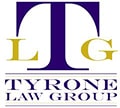Estate planning is the act of structuring and arranging your assets to ensure that they are transferred in accordance with your preferences after your death or incapacitation.
Creating a detailed estate plan assists you in safeguarding both your loved ones and your possessions.
Unfortunately, there is no one-size-fits-all solution for developing an estate plan. The specifics will depend on your unique circumstances. While this is the case, the following steps will help you become organized and easily start the process.
Put together your team.
You should assemble a team that will help you create your estate strategy. In your team, you may wish to include a financial advisor, a tax specialist, and an estate planning attorney to create a comprehensive, customized estate plan.
Each member of your team should be able to contribute to the process and offer crucial legal and financial guidance.
Together with your team, devise a strategy to guarantee that your assets are allocated to the people and organizations you specify with as little uncertainty as possible.
Have a guardian for your dependents.
The next step you should do is decide who you want to care for your dependents (if any) after you die. These could be little children, a loved one with special needs, or elderly parents under your care.
If no guardians are listed in your estate plan, a probate court can appoint one for you.
Before naming a guardian, make sure you consult with them ahead of time to obtain their consent. You should note that they are not required to manage a child’s inheritance.
You can appoint a third person, such as a trustee, to handle money or assets until the child is old enough to manage their inheritance on their own.
Also, remember that identifying a couple as co-guardians can be challenging if they divorce. Discuss this matter with your estate attorney, and consider appointing a backup guardian for your dependents.
Outline your wishes pertaining to assets and dependents
You should express your preferences about your assets and beneficiaries. Remember that without an estate plan, a judge may make such decisions for you in probate court.
To limit the danger of your assets going to probate, which can be long, expensive, and not in accordance with your preferences, include the following estate planning documents in your end-of-life strategy:
A living will: A living will, also known as a medical care directive, specifies the medical procedures you want and do not want to receive at the end of your life.
A healthcare Power of Attorney (POA) document, also known as a medical POA or healthcare proxy, gives someone you choose the authority to make healthcare decisions on your behalf if you cannot do so.
Advanced healthcare directive: An advanced directive provides instructions on medical treatments and healthcare services if you become incapacitated.
An advance healthcare directive often includes two documents: a living will and a healthcare power of attorney (POA).
Last will testament: A last will and testament specifies your preferences for your property and dependents after your death.
This document allows you to name beneficiaries, designate guardians for minor children, and appoint an executor for your estate, who will carry out your wishes as outlined in your will.
Create a trust
A trust is meant to hold money and other assets for your heirs. When you create a trust, you control what goes into it, who receives what, and how it is dispersed.
A properly constituted trust ensures that your plan is carried out exactly as planned. It may also prevent your estate from entering probate.
You should work with an estate planning and trusts attorney to ensure that you select the appropriate trust for your needs and that it is formed by your objectives.
As you create a trust, you should know that there are many types of trust. The most common ones being:
Revocable living trusts: A revocable living trust allows you to modify or terminate the trust at any time prior to your death. When you pass away, your revocable trust becomes irrevocable.
Irrevocable trusts: Once created, you cannot change or terminate them. While irrevocable trusts lack the flexibility of revocable trusts, they provide further protection against litigation, creditors, and taxes.
Charity trusts allow you to donate assets or money to a nonprofit organization. The good thing is that assets in a charity trust are no longer considered personal property, so they can be passed to your beneficiaries without being subject to taxes or lawsuits.
Plan for estate taxes
Estate taxes are federal taxes levied on assets such as cash, real estate, stocks, and other valuable property. You should note that your beneficiaries must pay estate taxes after receiving their inheritance, usually payable within nine months of your death.
You can do several things to prepare for or reduce estate taxes, including putting assets in an irrevocable trust or making contributions to family members.
You should consult a tax professional who can collaborate with your attorney and financial advisor to identify which estate tax preparation techniques suit your situation.
Work on avoiding probate.
Probate is the legal process of having your will verified through the courts. It can be time-consuming, expensive, and very public because probate cases are public records.
Furthermore, if you have not specified your wishes in your estate plan, a probate judge may make choices you disapprove of.
Fortunately, you can avoid probate by writing and maintaining a will, naming an executor for your estate, and appointing a trustee to handle trust assets.
Parting shot
These are some of the things you can do when creating an estate plan. As mentioned, you should try as much as possible and ensure you have a solid estate plan before you die. As a rule of thumb, work closely with an experienced probate attorney Largo who will hold your hand and guide you through the process.
